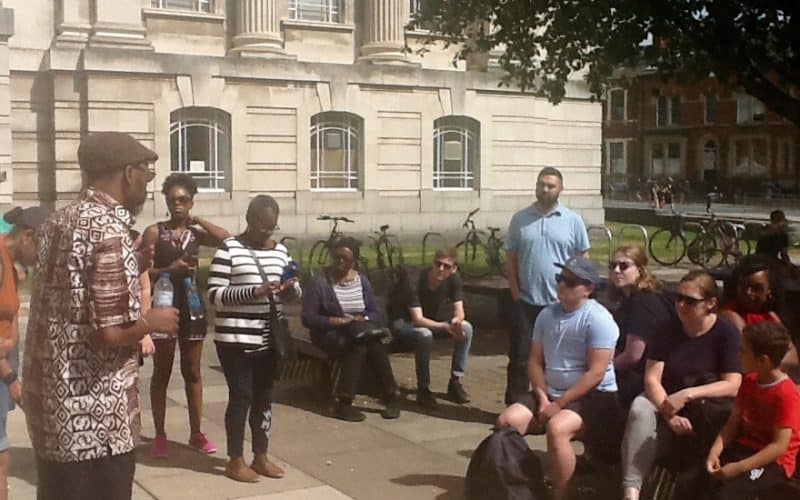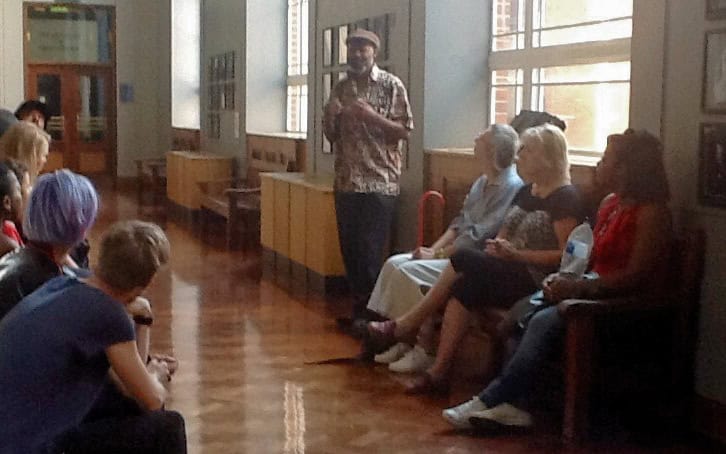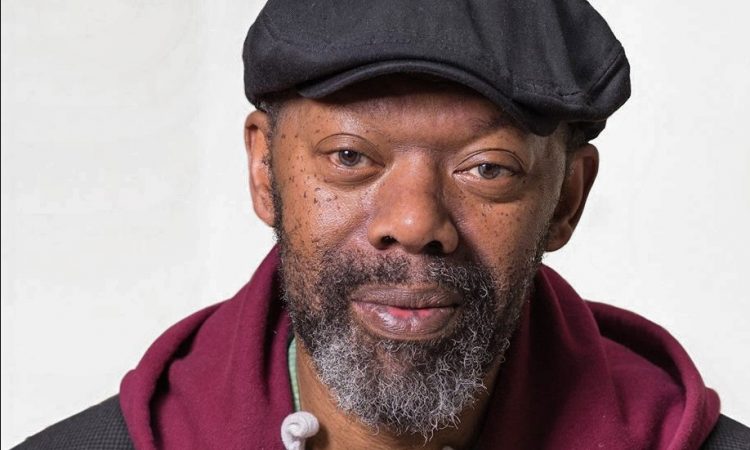Fascinated by the hidden history of Leeds, JOE WILLIAMS set up Heritage Corner and a walking tour with a mission… VANESSA MUDD joined him to discover how our perceptions of the present are moulded by the past…
his·to·ry Late Middle English: via Latin from Greek historia ‘finding out, narrative, history,’ from histōr ‘learned, wise man’.
Where exactly do perceptions of a city and its communities come from?
To answer this, I’ve arranged to meet actor Joe Williams on the steps of Leeds University’s Parkinson Building on a bustling Wednesday lunchtime in the rain.
Joe has invited me to explore some of the hidden historical narratives of the local area and chat about Leeds Black History Walk at the same time.
A graduate of Leeds University, where he explored African British narratives in the heritage industry, Joe created Heritage Corner in 2014. Inspired by his ‘wonderful course,’ it combines his considerable skills as an actor and performer with the rich historical content of Leeds’ Black History Walks which he started in 2009.
Church bells chime as we take shelter beneath the temple roof in St. George’s Field. This is Joe’s favourite spot, a magnificent architectural gem steeped in history, a calming, beautiful space open to all if we did but know it. One of the many reasons for exploring the campus with Joe is to discover these aspects of history that few are even aware of.
St George’s Field may be a recreation area now, but it used to be Leeds Cemetery, opened in the 1830s to accommodate overcrowding in other Leeds cemeteries. Clusters of graves are still evident alongside the obelisks and monuments. The obelisks suggest non-conformist associations to freemasonry, Joe tells me. There are nearly 100 thousand bodies buried here.
“Apart from the odd plane, if you close your eyes you don’t actually believe you’re in the city centre,” he says. “It is very peaceful, very tranquil and has a nice mystical atmosphere to it. I regard it as a sacred space.”

Joe knows which key places and ideas he’s going to include on each walking tour, but the uniqueness comes from the audience itself which can be varied and is often drawn from locations right across the UK – even from as far afield as Australia.
Joe varies what he says accordingly. “You tend to say different things to different groups. Lots of things I may say in one walk, I may not say on another.” People identify as having a certain amount of prior knowledge or will react in different ways, bring their own stories or questions, allow different aspects to come out.
“I improvise and then I learn a lot along the way as well,” says Joe, “so the walk now is very, very different from when it actually started.”
Joe is a performer, his artistry and skill turning what might be dull or cringeworthy into something magical and engaging. He encourages his audience to ask questions and make links, but there’s no pressure if they’d rather just absorb and reflect.
He can read their faces, he says, their reactions are a mixture of “amazement and dumbfounded confusion. Some people feel betrayed… How can there be this much history, so rich, that is so informative about a people’s humanity and we’ve just been fed the inhumanity side of the story?” he explains.
The walking tours highlight hidden histories and “the diversity within the diversity”. In exploring Africans in Yorkshire, Joe also emphasises the eminent role women have played. “Black history is about human beings so therefore it reflects the complexity of human beings and the societies they create or that they become a part of.”

People go away and process what they have been told. Joe is unrelenting in providing as much information as he can and hopes they will go home enthused to find out more. He loves to hear from people with further questions and ideas. In fact, one follow up query came from his Australian visitor – about the significance of architecture pointed out during the tour.
This prompts a discussion about Nubian influences in the arch which was the original cemetery entrance. It is similar to entrances found in Nubian temples. There are many more Nubian influences on the city if – like Joe – you know your history and you know how and where to look.
“It’s about the shifts in power and the history that is written in order to maintain the new status quo,” says Joe. “Men feel threatened and do whatever they can to be dominant.”
If you think ancient civilisation begins with the Greeks and Romans, Joe will tell you about King Alfred and his father; Egyptian medical procedures; the introduction of street lighting (Not the Victorians then?!); how the crusades evolved credit systems and why there were many more pyramids in Nubia than there are in Egypt.
Joe weaves a fascinating historical tapestry, but enjoys questions and loves finding links to help you piece together ideas for yourself. On his tours he will slip into character to enhance each revelation of the hidden history surrounding us.
I ask Joe my Time Machine question; what period would he travel to if he could?
His reply is characteristically enthusiastic. “No period of time is absolutely perfect I’m sure. I’d definitely say Ancient Nubia because I’d like to know more. We’ve spoken about women in history, I would love to see that, see how it worked. Maybe it wasn’t perfect but I’d love to go back to see how their matriarchal functioned.”
The last Heritage Corner walking tour of this season is Saturday 6th October. Meet on the front steps of Leeds University’s Parkinson building at 11.00 am rain or shine. More information here
